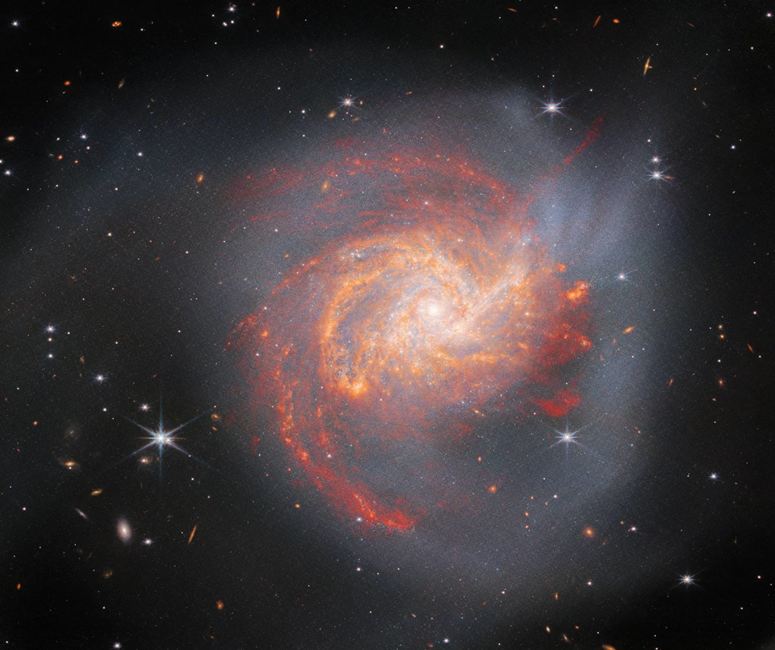What happens when two galaxies collide? James Webb answers

Image posted by the James Webb Telescope account on Twitter.
Astronomers were able to discover an ancient disaster that befell the globe, dating back more than half a billion years, which would redraw the history of the universe and the development of life on the planet, and is of great importance in determining the path of humanity.
A report published by the British newspaper “Metro” said that the “James Webb” telescope of the “US Space Agency (NASA)” detected an incredible catastrophe. It is half a billion years old.
According to the details revealed by American scientists, thanks to this discovery, they were able to form another insight into the history of the universe, and they indicated that this catastrophe that was discovered was "a cosmic collision between two galaxies that occurred half a billion years ago."
The image captured by the telescope shows a glowing swirl of red and orange, punctuated by bright stars, 120 million light-years away. However, something in the mass of stars and dust indicates its past, and confirms the fact that it was once not a single galaxy; Two galaxies.
Scientists say that when galaxies collide, they direct the gas and dust needed together to form new stars, and this can be seen in the brighter regions; Young stars emit infrared light that radiates off tiny grains of dust, giving the galaxy its distinctive glow captured by the telescope.
The research team said: "The galactic collision that caused the formation of (NGC 3256) led to a luminous explosion of star formation that can be seen in the brightest parts of the image."

He added: «These young stars shine most brightly at the longest infrared wavelengths, and the light that can penetrate through the dark dust in the galaxy, yet sometimes the old stars are safe when galaxies collide, thanks to the large distances between them; As the closest star to us after the sun is (Proxima Centauri), about 25 trillion miles away.
"If you were asked to photograph a galaxy collision, you might imagine stars swaying together with catastrophic results," the team said. He continued, "In fact, the interstellar spaces in the galaxy are vast, and when galaxies collide, their star clouds pass through each other and mix like two clouds of smoke."
Scientists say their findings can teach them more about the formation of our galaxy.
And last January, the James Webb telescope spotted the first strange planet, as its first images, which were revealed later, showed the universe 13 billion years ago.
Source : websites

